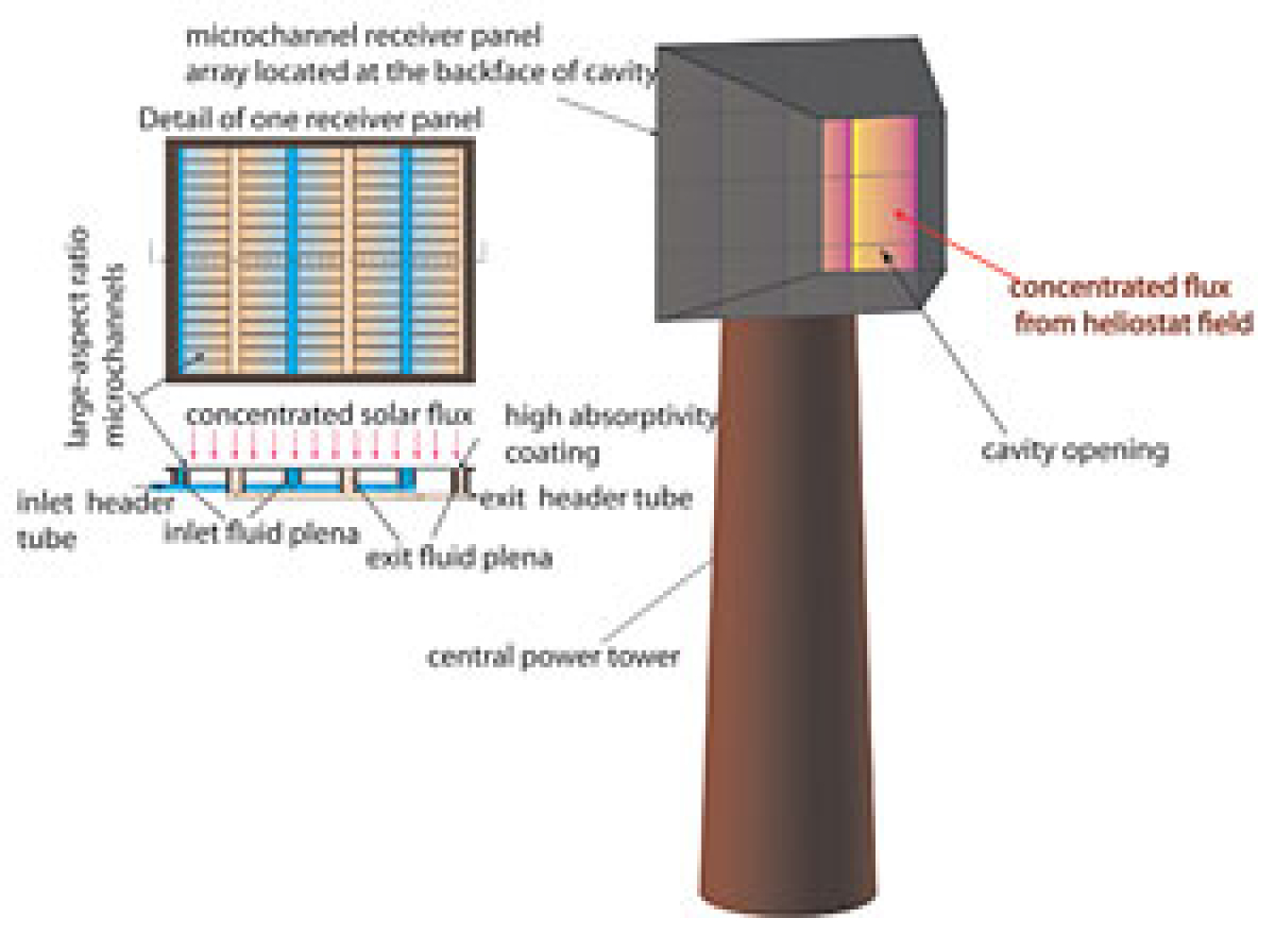-- This project is inactive --
Oregon State University and its partners, under the 2012 SunShot Concentrating Solar Power (CSP) R&D funding opportunity announcement (FOA), are working to develop an advanced heat exchanger for use in CSP receivers. The heat exchanger has the potential to significantly increase heat transfer and reduce the size of the receiver.
Approach
The research team seeks to reduce the size, weight, and thermal loss from high-temperature solar receivers by applying microchannel heat-transfer technology to solar-receiver design. The extremely high heat-transfer rates afforded by microchannels are expected to enable the development of a receiver that can absorb high solar flux, while using a variety of liquid and gaseous working fluids.
The goals of the project are to:
- Develop a microchannel solar-receiver design for liquid-cooled microchannel receivers and test the concept in the laboratory
- Develop a microchannel solar-receiver design for gas cooling, test the concept in the laboratory, and demonstrate the design on a solar dish at Pacific Northwest National Laboratory.

Illustrated is the microchannel solar center receiver concept.
Innovation
The novel use of microchannels for enhanced heat transfer in solar receivers has the potential to significantly reduce device size and increase performance. The research team also intends to develop novel adaptive flow-control devices capable of redistributing flow as solar flux varies with time.
Publications, Patents, and Awards
The SunShot CSP R&D program seeks to accelerate progress toward the cost target of $0.06 per kilowatt-hour through novel and revolutionary research into CSP technologies. Learn about other DOE competitive awards for concentrating solar power research that are in progress.
